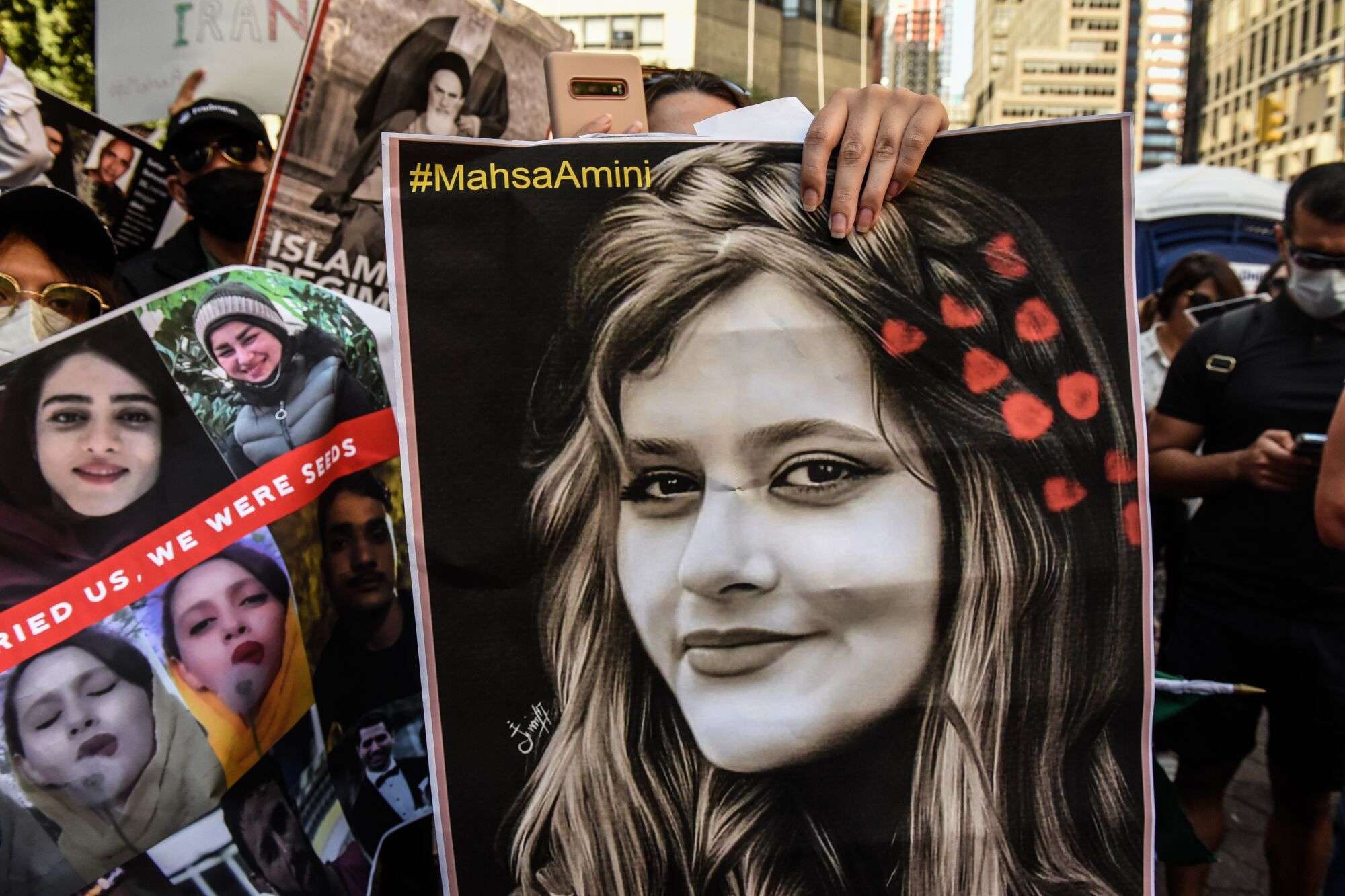
Over the past 43 years, the women of Iran have been enduring oppression and humiliation by the regime. However, their suppression never stopped them from actively participating in political protests. They have been fighting for their rights for generations. Yet, there is something different about the 2022 protest. This time, women are not merely the participants of the movement, THEY ARE LEADING IT AND BECOME THE FACE OF THE MOVEMENT.
Iran’s general dress code has always been a source of controversy. Following the custodial death of a 22-year-old woman, Mahsa Jina Amini, in Tehran in September 2022, widespread protests erupted across Iran. Mahsa was arrested by the morality police for not wearing the hijab properly. They took her to the station and a couple of hours later she had been admitted to the hospital as she went into a coma. Three days later she was declared dead. As per the police report she died due to a cardiac attack. However, Amnesty International and other sources claim that the death of Mahsa was due to the torture and brutal beating inflicted on her.
Her story spurred opposition to the Islamic Republic, and protests erupted all over Iran. The terrible demise of Mahsa is becoming a tipping point for both the Islamic Republic and Iranian women. Being treated as second-class citizens has worn thin on women of Iran.
Decades-Long Protest Against Hijab in Iran
Before the Islamic Revolution of Iran in 1979, wearing a hijab or covering the head was a matter of choice. Women used to wear hijabs as a part of their Islamic culture. The hijab first became a political symbol when Mohammad Reza Shah Pahlavi, in 1936 issued a statement which had banned all Islamic veils. Banning hijab was an important element in modernizing Iran. Later on, his son Shah Mohammad Reza reduces the enforcement of this law and once again wearing a hijab became the personal choice of women. The Reign of Shah Mohammad Reza was known as the golden period for women as important changes were made to empower women. During this period, women gained voting rights, the right to contest the parliamentary election, the right to divorce, and the right to travel alone which opened a wide range of educational and work opportunities for women.
On the other hand, with the establishment of the Islamic Republic of Iran in 1979, the plight of women took a step backwards. The new regime passed a law that made it obligatory for women to wear hijab. Suddenly, they are not allowed to work in certain jobs, polygamy becomes legal, women lose the right to divorce and the right to travel without the permission of the husband is taken away and not wearing the hijab was made a punishable offence.
As a result, on International Women’s Day in 1979, thousands of women came to the streets of Tehran to protest against the mandatory hijab. Iran witnessed the first Anti-Hijab protest by women. The Islamic government has increased the number of legislation and social constraints that must be followed in order to implement hijab laws throughout time. The 1990s saw the introduction of criminal penalties, which included both jail time and fines. The Iranian regime had gone to lengths that in order to apprehend those who disregard the Islamic clothing rule, the morality police was founded in 2005. Nonetheless, Iranian women never quit resisting and kept fighting for their rights and freedom. They have participated in every demonstration that has taken place over the past 43 years and have campaigned for reform and a change in the regime since the 1980s.
Wider Spectrum of Women’s Protest
Iranian women are subject to stringent rules that have been in place for 40 years. But today, both men and women have protested in the streets to say enough is enough.
The protest spurred after the death of Mahsa Amini is significant as well as unprecedented in terms of how it cuts across many different social divides in Iranian society. A protest that started in a small Kurdish town in western Iran has now attracted the attention of the world. Mass demonstrations in support of the Iranian uprising were held in more than 150 cities worldwide. A number of celebrities show their support for Iranian women through their social media accounts. Women should get the freedom to choose not only what to wear but how to lead a life.
However, the protest which started against the obligatory hijab includes under its spectrum the diverse social and economic issues faced by the people of Iran. The issue is no longer about the piece of cloth rather it is a women’s fight against suppression and discrimination. The compulsory hijab has long represented the government’s efforts to control what women can do and think. Iran is a country where women are better educated than men. More than sixty per cent of university students in Iran are girls. Yet, their proportion in the economic sector is far below that of the men rendering them financially unstable. Their unemployment rate was twice as high as men’s in 2021, and they were paid less than men in the same jobs. In addition to this, Iran’s discriminatory legal system Iran’s gives husbands a lot of power over their wives’ lives and lacks laws that would protect women against domestic violence.
It is also important to highlight the multifaceted aspect of the 2022 protest. As the women went out on the streets, men quickly join them. People from all backgrounds came together to become a part of the protest as they are tired of the mismanagement of the country and the weak economy. Even veiled and religious women are also seen raising their voices against the brutality of the regime. University and school-going girls are removing their headscarves and burning them openly in front of police without a hint of fear in their eyes. Chants of “Death to dictator” and “Women, life, freedom” roaring in the streets of Iran.
Meanwhile, in an effort to put an end to the demonstrations, the Iranian government is responding with deadly force. As a result, there have been more than 400 deaths and 15000 arrests since the protest began. On the other hand, the women of Iran are taking a huge risk. They are putting their lives in danger, particularly young girls. It has been reported that the average age of girls who are participating in the protest is 15 years. This is Iran’s Generation Z, fearless and outspoken and determined to bring change in their lives.
The most distinct aspect of the current women’s protest in Iran is that there is no ideological, religious or political agenda which have driven the protest. Their only demands are human rights and equality before the law. Women’s rights must be realized first in order to realize human rights. Women want to be seen as equal to men and come out of the shadow of men. Their frustration and anger which they have been enduring for 40 years have today become a strong force capable of challenging the foundations of the Islamic Republic of Iran. It would not be wrong to say that Iran is witnessing the biggest mass demonstration after the 1979 revolution. It has become evident that the aim of the demonstrator is not directed at bringing a change or reform in state policies, rather they seek to completely overthrow the regime. They want a regime based on equality, secularism, democracy and freedom.
The protest is not only limited to Iran, a sizable Iranian diaspora has expressed support for the demonstrations in the US, Canada, and Europe as well, while the international community, including United Nations, are condemning the authority’s violent crackdown on the demonstrators. Iran was expelled from the United Nations Commission on the Status of Women on December 14, 2022.
There are 42 million women in Iran who stood up against the injustices, despite the looming dangers of punishment and retaliation from the police. They are adamant to restore their rightful position in society. It is no surprise that they have left the world in awe with their determination and courage. The protest continues, will they bring about any change in the country?
By: Heena Parveen



